Driving south out of the Black Hills, we happened upon an amazing roadside attraction in the small community of Pringle. The cleverly named “Bicycle Sculpture” seems still to be growing. I am in awe.
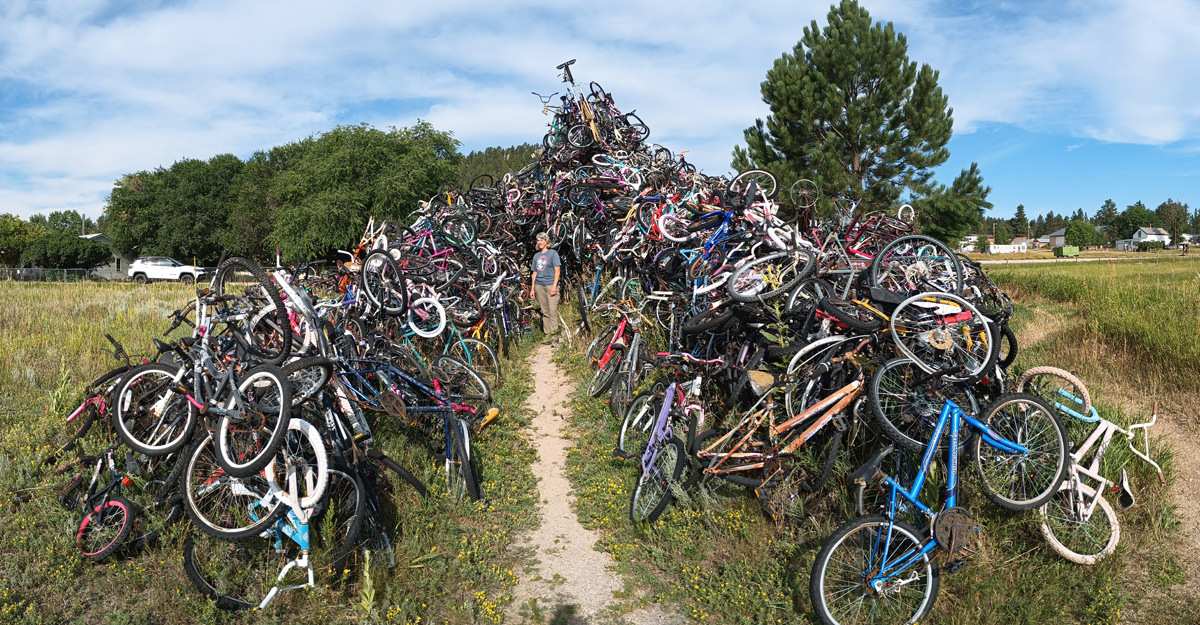
Jana with a magnificent pile of bikes, Pringle, South Dakota
Then on to southeastern Wyoming, where everything is named Laramie. We only had about 24 hours to spend in Wyoming, and we chose to visit the town of Fort Laramie, Fort Laramie National Historic Site, and just plain Laramie. We love this state and its wide-open spaces, but what the heck? They couldn't think of more names?
First Fort Laramie the town, population 250 good people and six soreheads – or so says their welcome sign. Apparently, there used to be seven soreheads, but one has been laid to rest beneath the sign. Initially, we drove straight through town without stopping but quickly decided we'd regret it if we didn't turn around for a closer look.
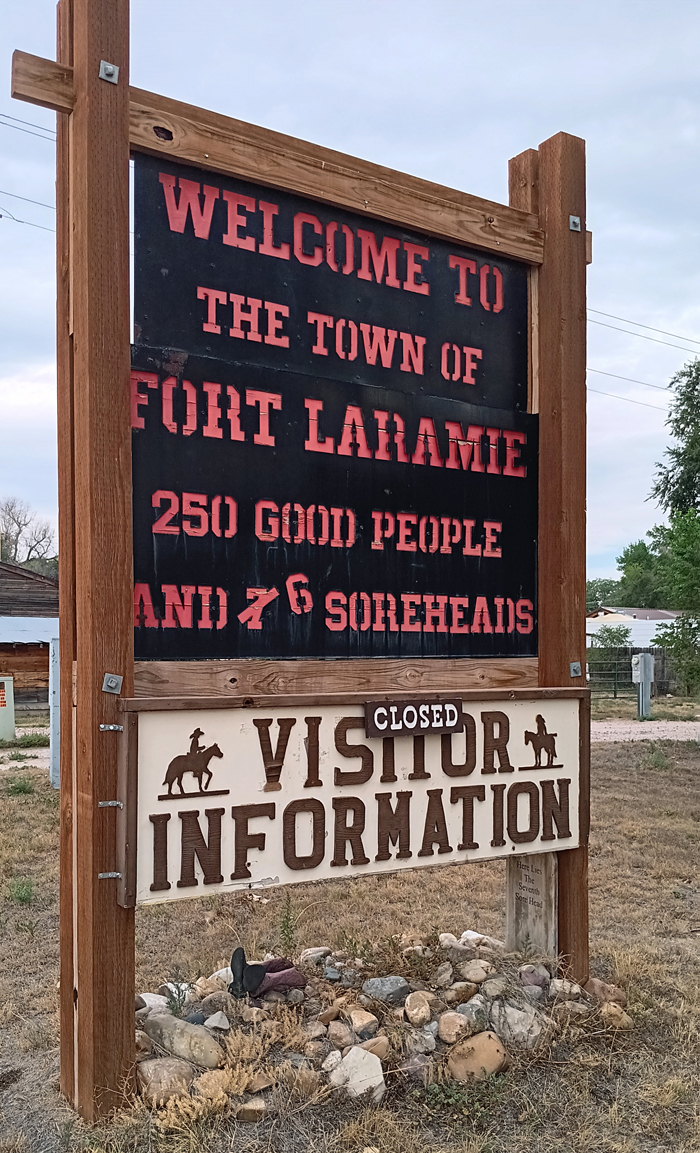
Here lies the seventh sorehead, Fort Laramie, Wyoming
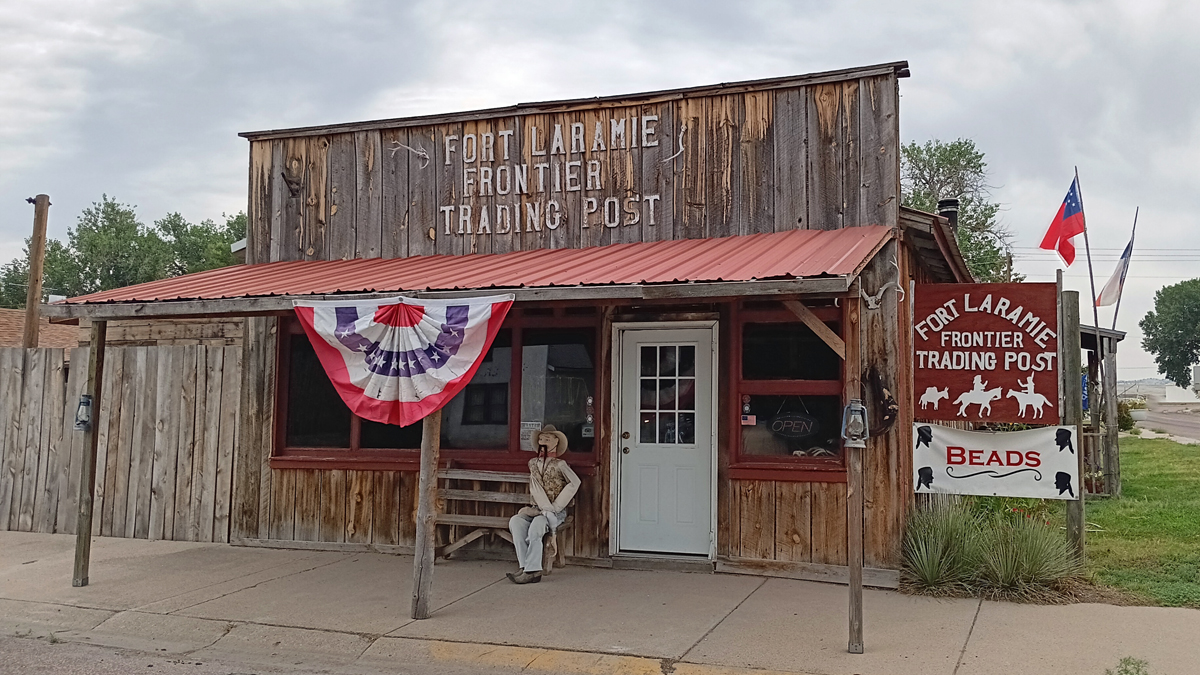
Life on the frontier
Between the town and the fort, we stopped by the Old Army Iron Bridge, built in 1875 to overcome the great obstacle to travel and trade that was the North Platte River. Before the building of the bridge, high water made the river impossible to cross for several months of the year.
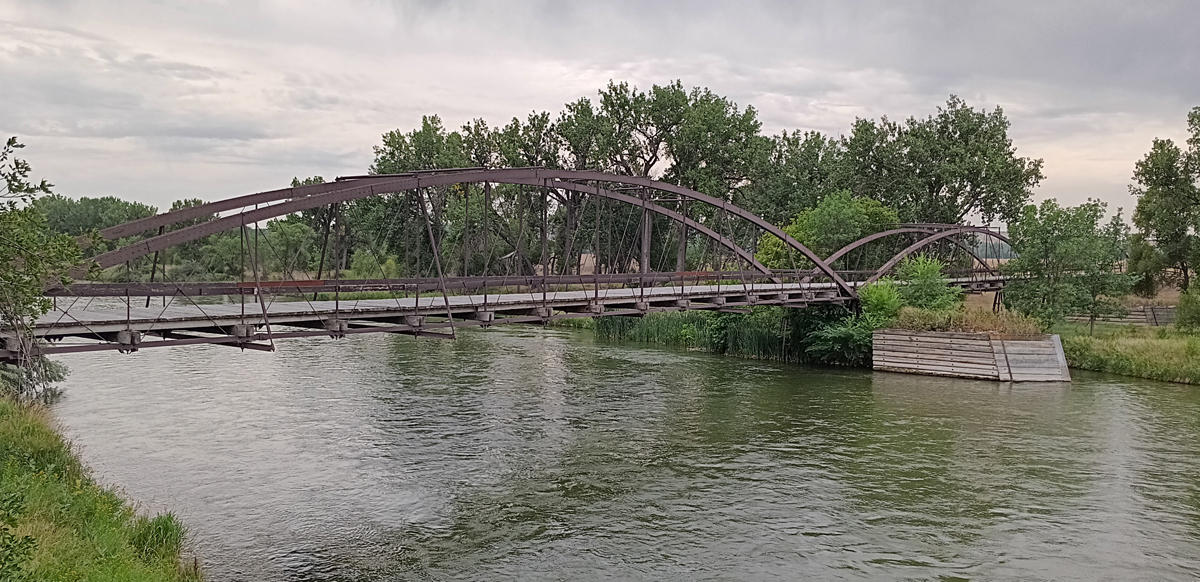
Old Army Iron Bridge over the North Platte River
Historic Fort Laramie was an important stop on the Oregon, California, and Mormon overland trails, as well as a staging point for various military excursions and treaty signings. Administered by the National Park Service, the site has a few preserved original buildings, along with some ruins and reconstructions. Some of the buildings are furnished to show how they would have looked when the fort was an active military site.
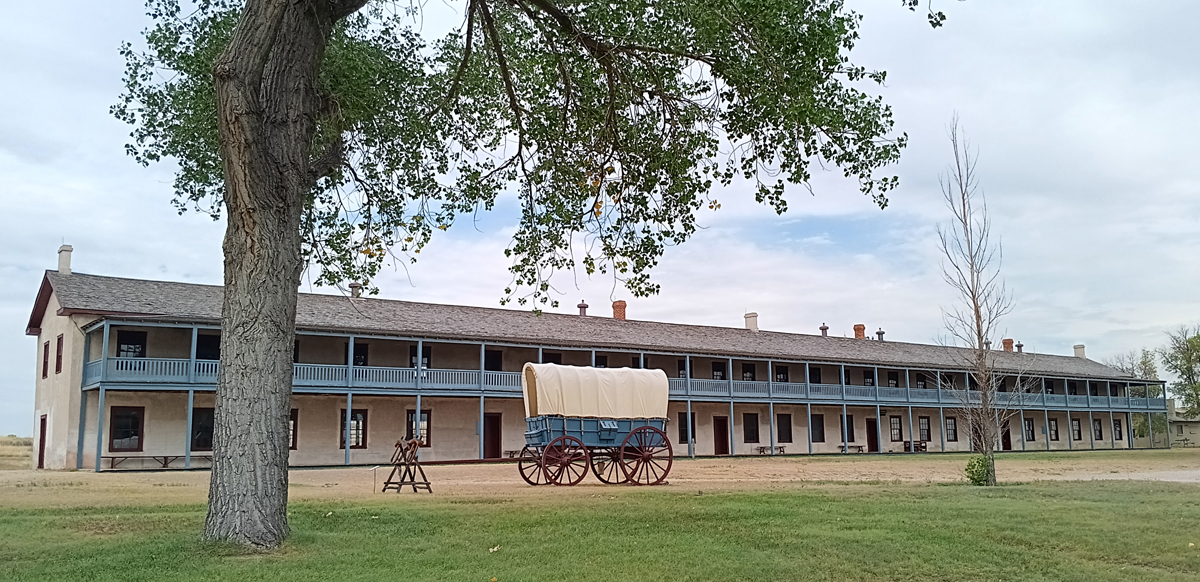
Fort Laramie enlisted barracks
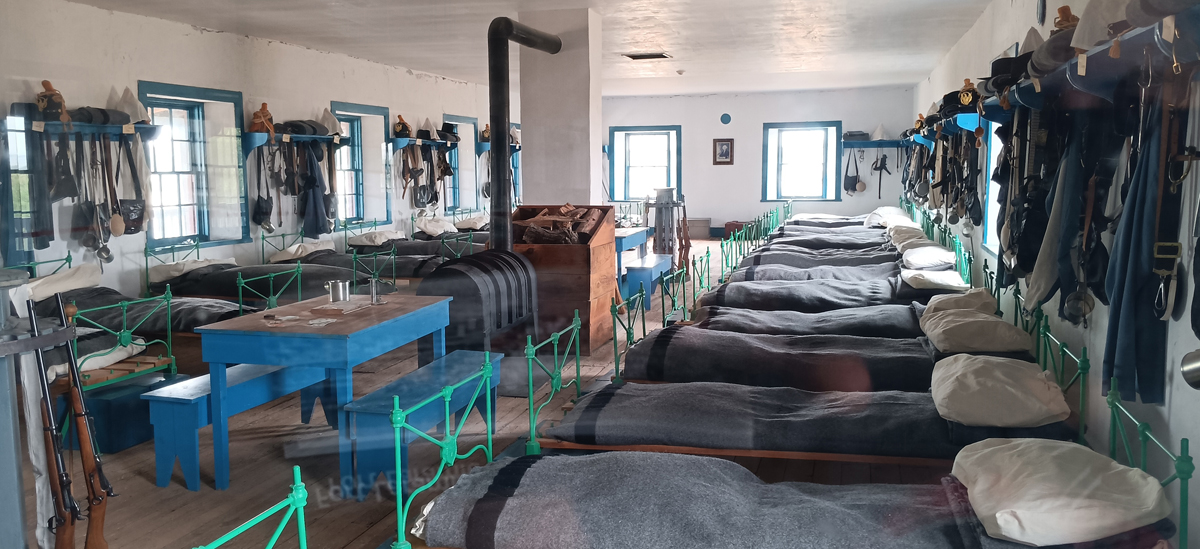
Close quarters for the enlisted men
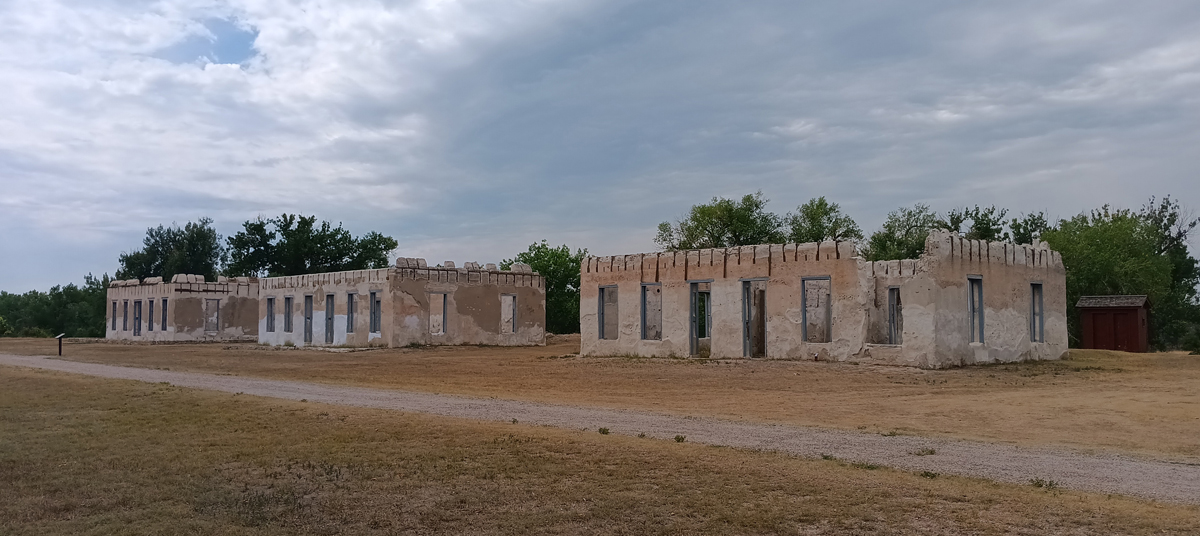
Ruins of more barracks
Opened as a private fur trading fort in 1834, later converted into a military post, and finally abandoned in 1890, Fort Laramie was active during the entirety of America's westward expansion, during the time of trappers, explorers, and pioneers – and the resistance of Indians to the encroachment of their territories. This was the largest military post on the Northern Great Plains.
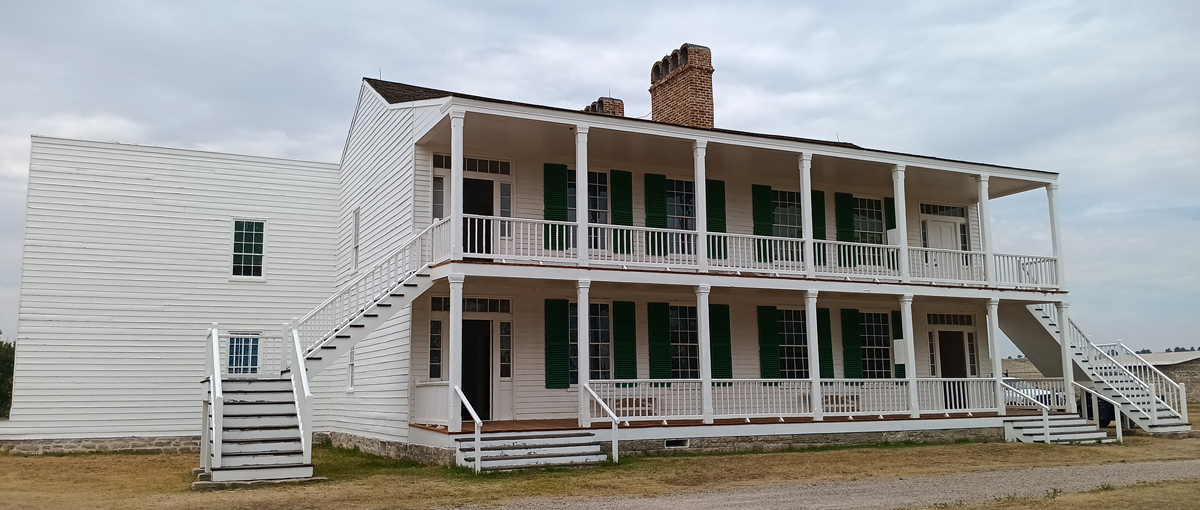
Bachelor officers quarters, aka "Old Bedlam"
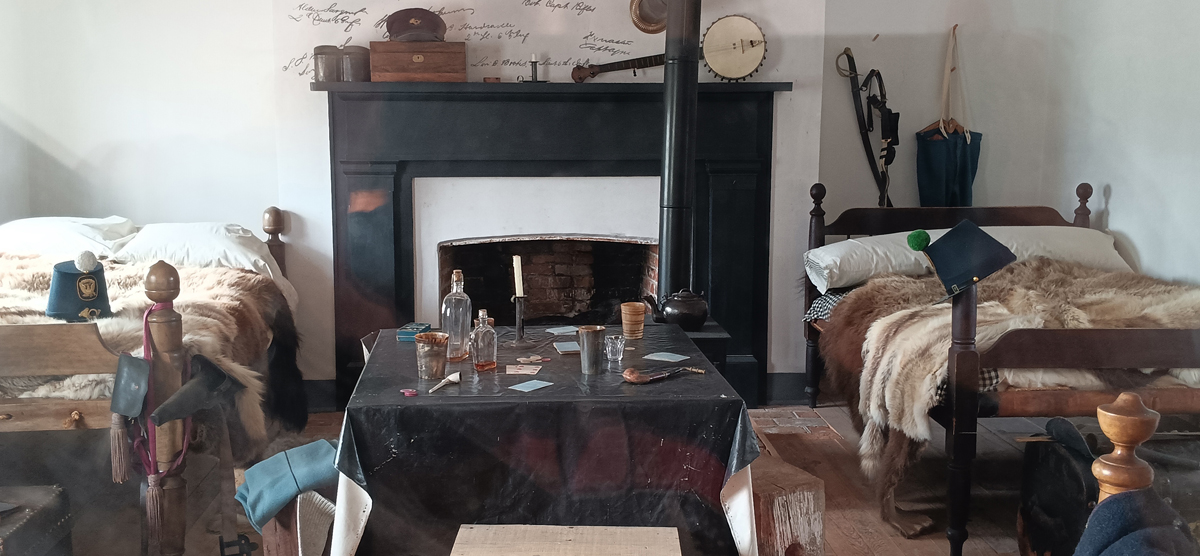
Much more spacious
We left the fort driving west on dirt roads toward Register Cliffs – much easier in the Jeep than in a covered wagon. Early pioneers inscribed their names and the date into the sandstone cliffs to mark their passage as they emigrated west to, hopefully, a better life. The earliest inscriptions date back to the early 1800s.
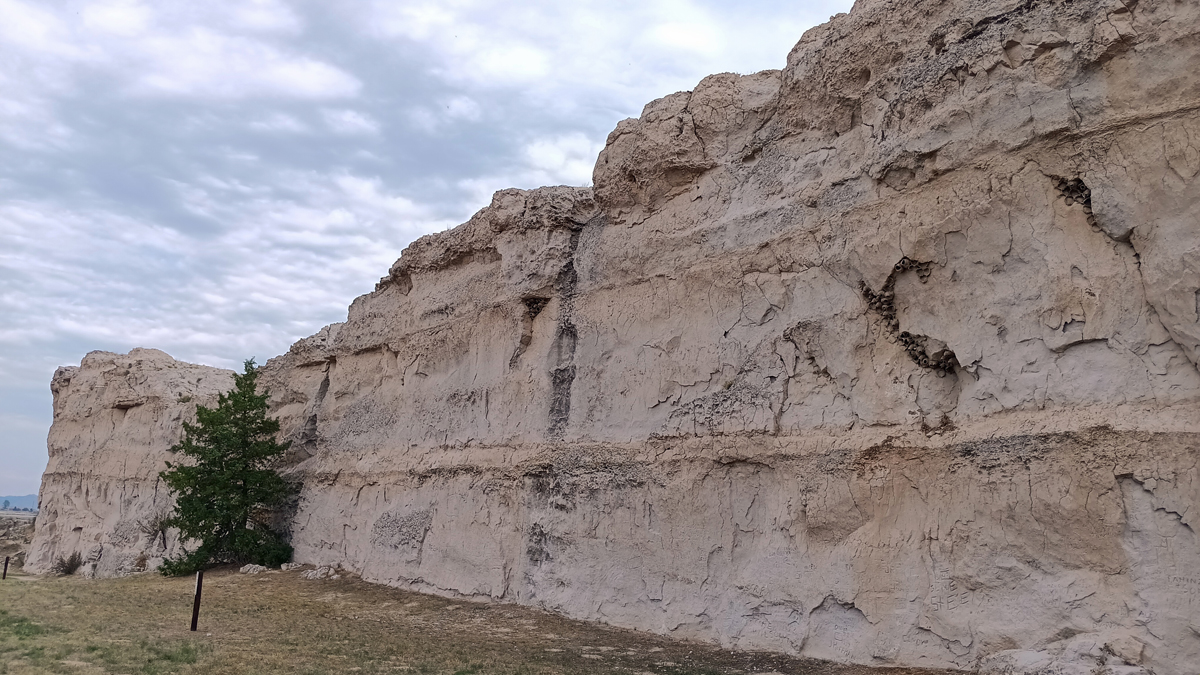
Register Cliffs
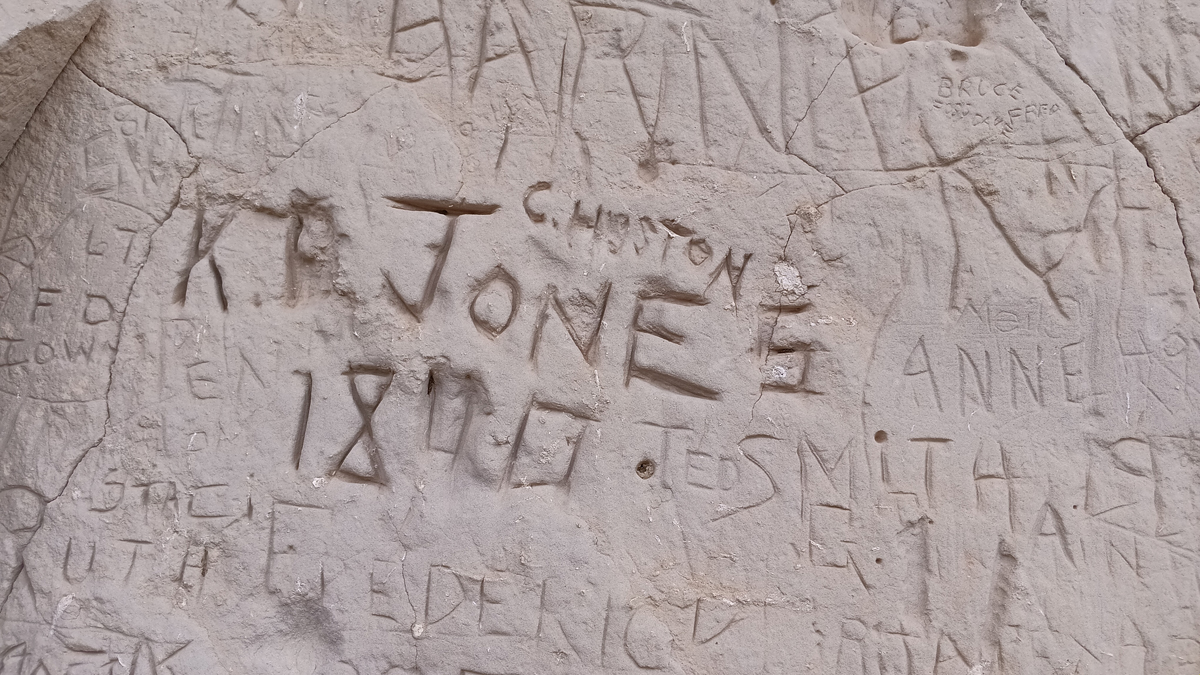
Early American frontier graffiti
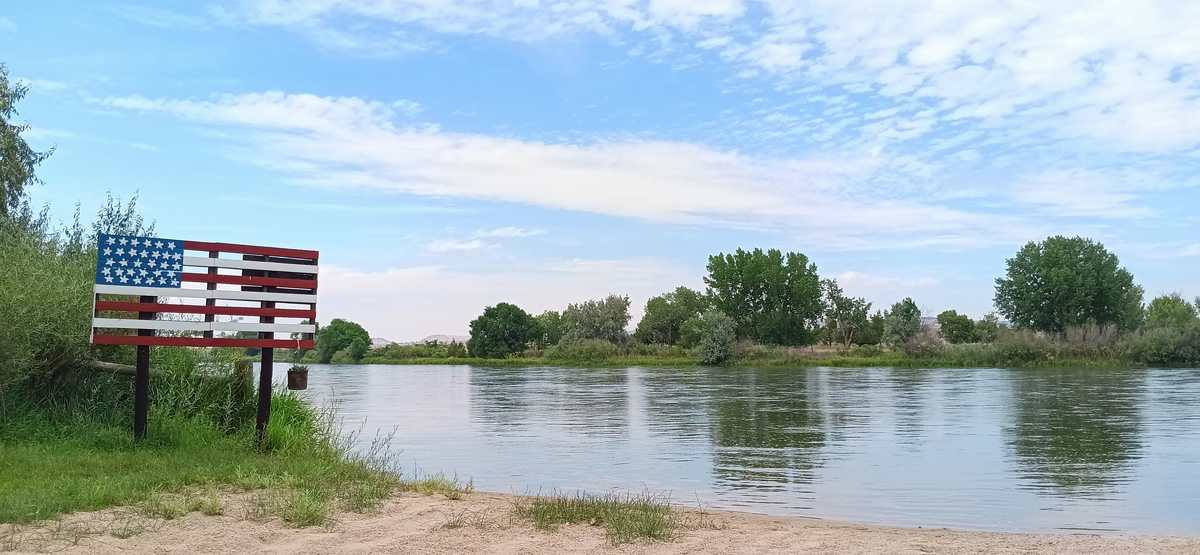
North Platte River
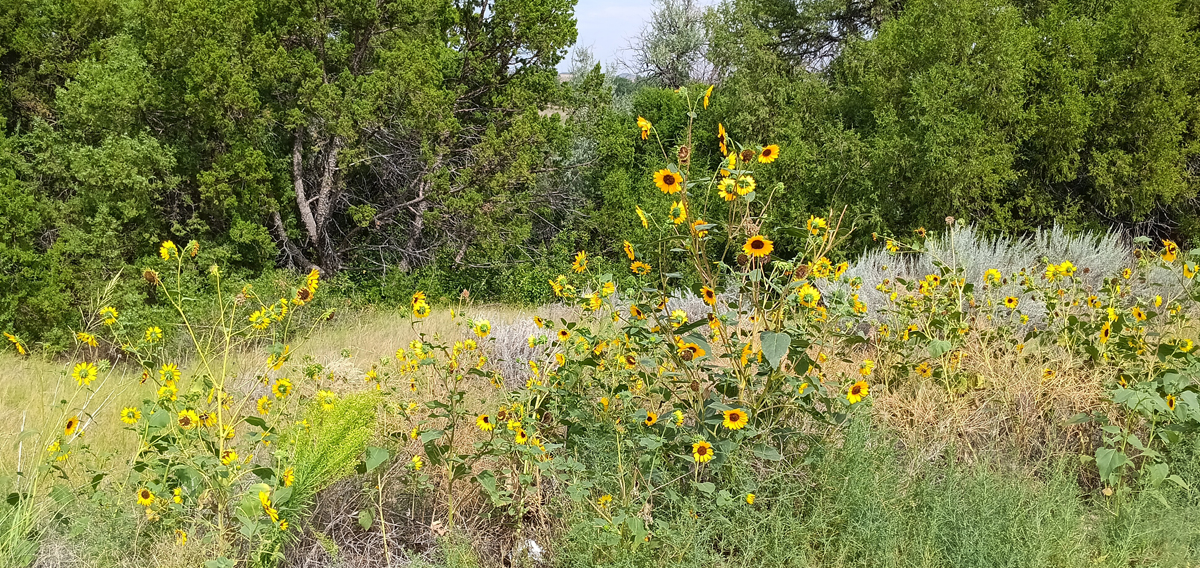
Wildflowers
A few miles further on, we reached the Oregon Trail Ruts State Historic Site, also known as the Guernsey Ruts. The four-foot-deep tracks in the sandstone ridge are some of the best-preserved wagon ruts on the overland route west.
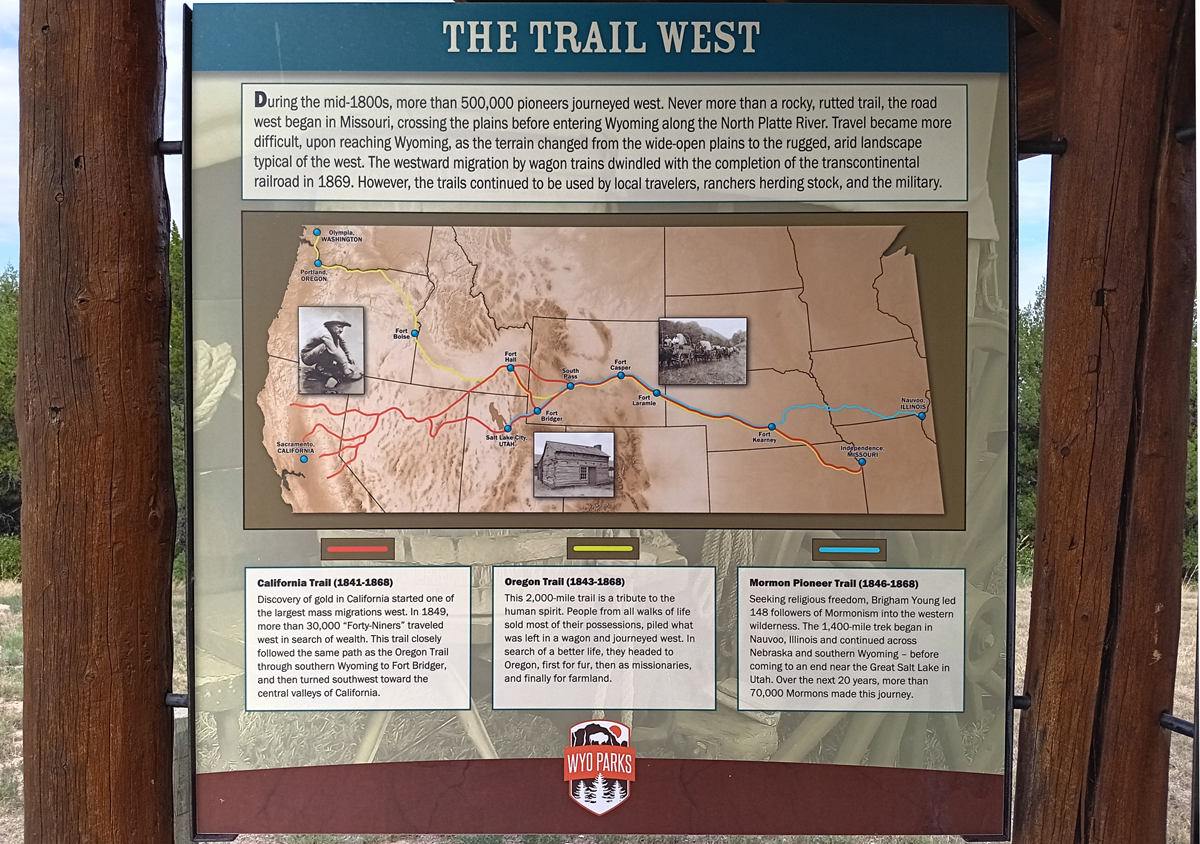
Oregon Trail Ruts State Historic Site, aka the Guernsey Ruts
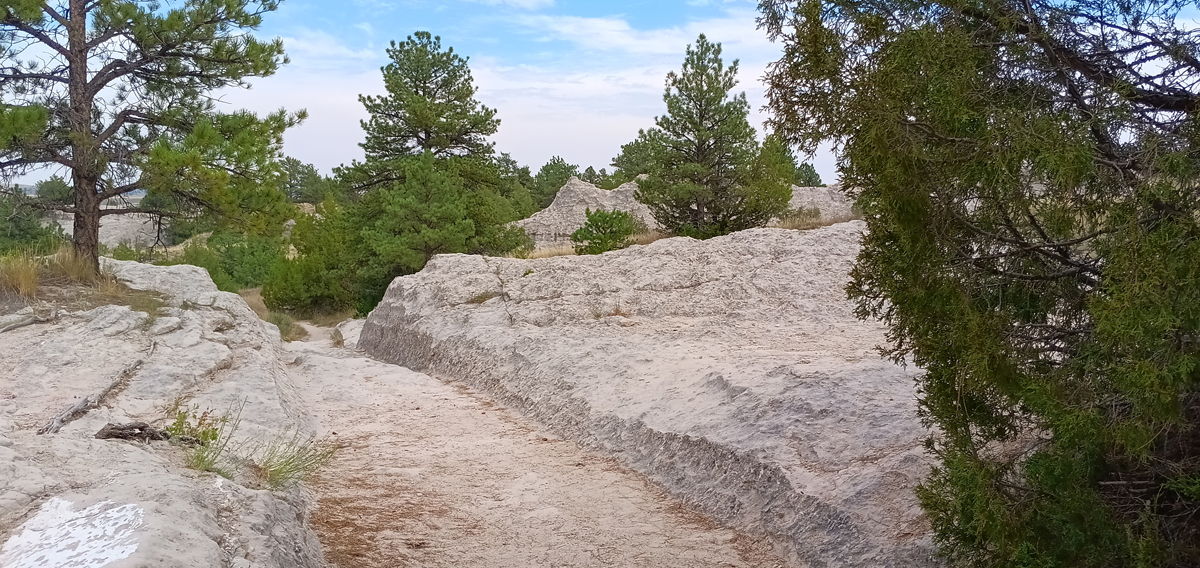
Wagon trail
After that, we turned on some tunes and drove southwest through the rolling high country of Wyoming toward the town of Laramie. At one point, we passed by a wildlife research station on WY Highway 34 and saw a huge elk, helpfully separated from the road by a tall fence.
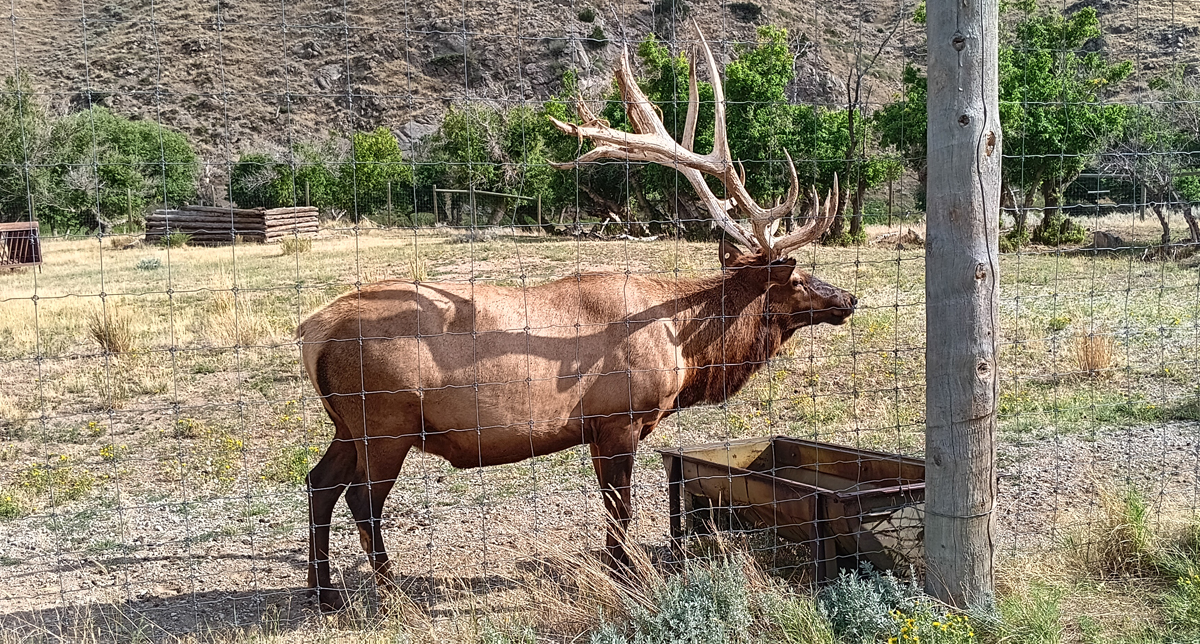
Nice rack!
Lodging: Motel 8 (as opposed to Super 8), Laramie, Wyoming. We chose this motel for its laundry facilities, but it was clean, economical, had a very comfortable king-sized bed, and good coffee in the lobby. Our only complaint was yet another night of weak WiFi, but we survived.
Laramie has a population of 33,000 and an elevation of 7,200 feet. It is the fourth largest city in Wyoming and is home to the state's only four-year university, the University of Wyoming, which is probably why this moderate-sized town has a selection of five craft breweries. We chose The Library Sports Grille & Brewery because they also serve food. It was great!
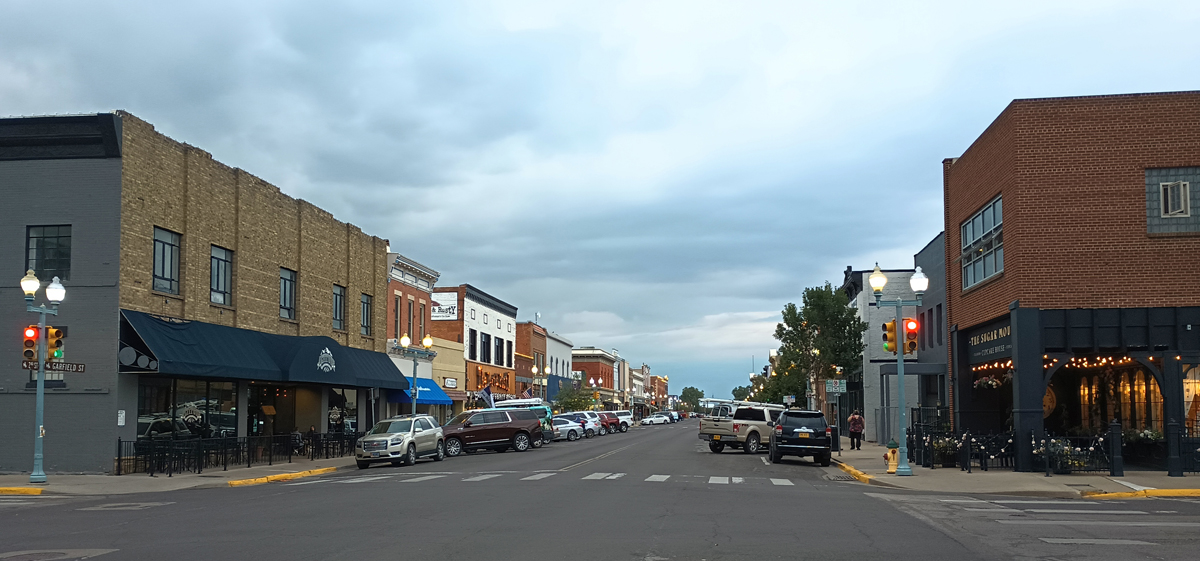
Laramie, Wyoming

A tree riding a bicycle
After dinner, we walked around downtown Laramie until it began to rain. It was lively this Thursday night, with lots of college students out and about. There's a huge railroad yard at the edge of downtown, with a pedestrian bridge over the tracks.
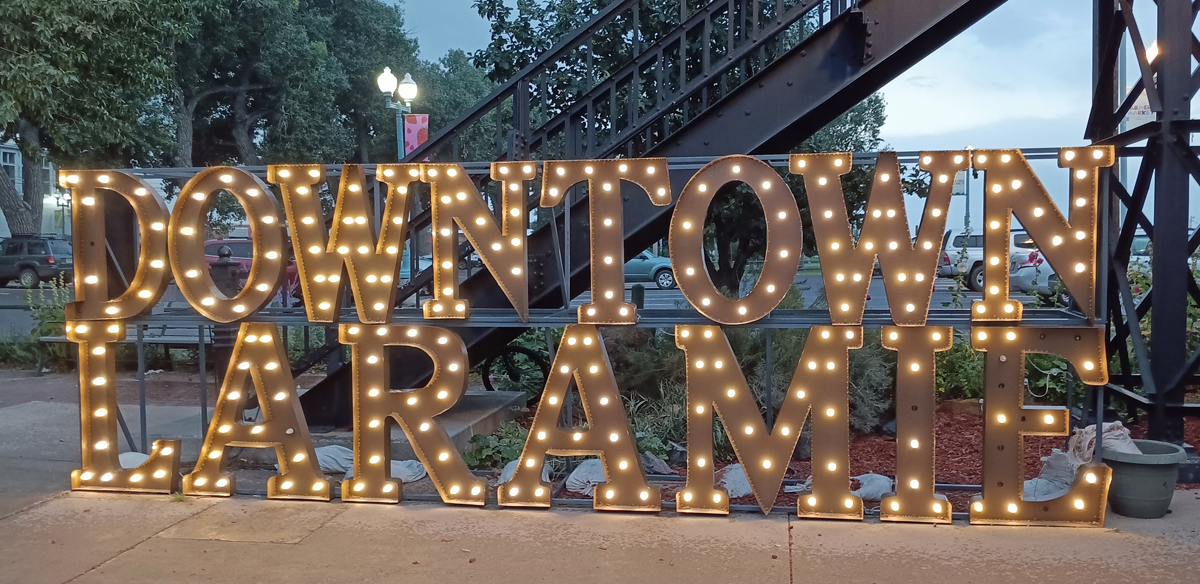
Where are we again?
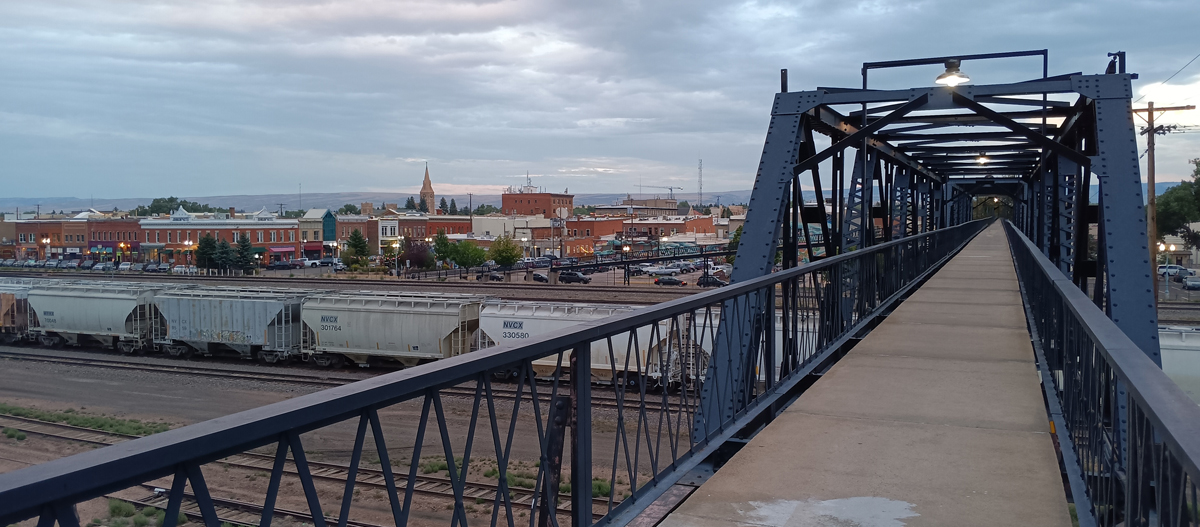
Laramie and the rail yard from the pedestrian bridge